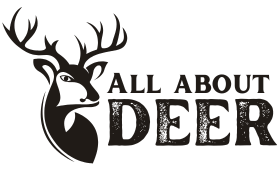The Hairy-fronted Muntjac, a remarkable deer species that dwells in the dense forests of Southeast Asia. This elusive creature, with its distinctive features and intriguing behaviors, has long captivated the curiosity of wildlife enthusiasts. Let's embark on a journey to unveil the secrets of the Hairy-fronted Muntjac.
Table of Contents
Species Data
- Class: Mammalia
- Order: Artiodactyla
- Family: Cervidae
- Scientific Name: Muntiacus crinifrons
- Life Span: Typically 10-15 years
- Height: Approximately 45-60 cm (18-24 inches)
- Weight: Around 15-30 kg (33-66 pounds)
Description
The Hairy-fronted Muntjac, scientifically known as Muntiacus crinifrons, is a small deer species recognized for its unique appearance. This muntjac stands out with its reddish-brown coat adorned with distinctive white markings and the characteristic “hairy” frontal features.
Appearance
These enchanting deer possess a compact build with short legs and a gentle demeanor. Their reddish-brown fur, marked with a white throat and chin, adds to their charm.
Behavior
Hairy-fronted Muntjacs are primarily solitary creatures, preferring the solitude of the forest underbrush. They are known for their alertness and agility, which help them evade predators effectively.
Habitat
These elusive deer are inhabitants of the dense evergreen and deciduous forests of Southeast Asia, where their excellent camouflage skills serve them well.
Diet and Nutrition
Hairy-fronted Muntjacs are herbivores, relying on a diet of leaves, fruits, and buds. Their foraging habits play a significant role in shaping the biodiversity of their ecosystem.
Mating Habits
During the breeding season, males engage in vocal displays and scent marking to attract potential mates.
Mating Behavior
- Reproduction Season: Typically occurs from October to February.
- Pregnancy Duration: Approximately 210 days.
- Baby Carrying: Mothers provide attentive care to their fawns.
- Independent Age: Fawns gradually gain independence at around 6-8 months.
- Female Name: Doe
- Male Name: Buck
- Baby Name: Fawn
5 Fun Facts for Kids
- Hairy-fronted Muntjacs are often referred to as “barking deer” due to their distinct vocalizations that sound like barks.
- They have sharp, curved canine teeth known as “tusks,” which they use for self-defense.
- These deer are expert swimmers and are known to cross rivers in search of food.
- Hairy-fronted Muntjacs are primarily active during dawn and dusk, making them crepuscular animals.
- Conservation efforts are vital to protect the habitat of Hairy-fronted Muntjacs and ensure their survival in the wild.

